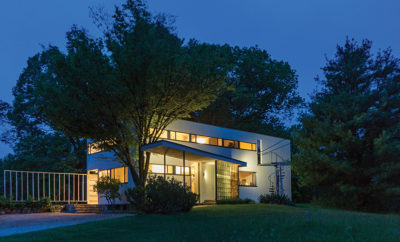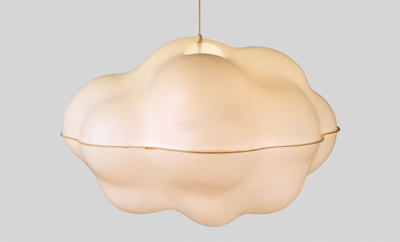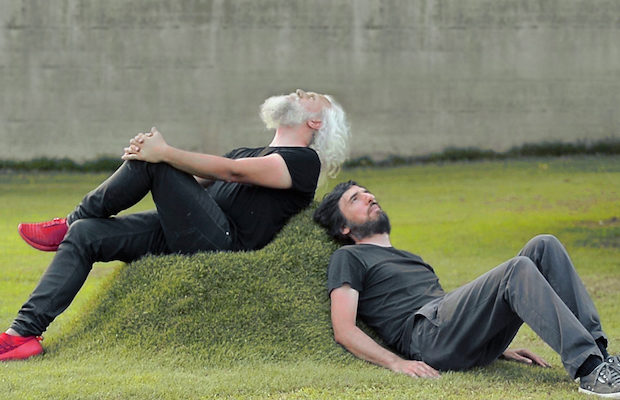 Nucleo, Andrea Sanna + Piergiorgio Robino, LA POLTRONA D’ERBA (The Grass Armchair), corrugated cardboard, 2000. Gift of Jay L. Swanson/Frederick R. Weisman Art Museum, University of Minnesota
Nucleo, Andrea Sanna + Piergiorgio Robino, LA POLTRONA D’ERBA (The Grass Armchair), corrugated cardboard, 2000. Gift of Jay L. Swanson/Frederick R. Weisman Art Museum, University of Minnesota
Design
Curator’s Eye: Studio Nucleo’s TERRA!
WHEN NUCLEO ASSERTED that “the process of consumption of objects in our homes is one which has historically been insensitive,” it entered into an essential modern discussion about home design, nature, and sustainability. In its work, Studio Nucleo draws from and advances ideas that took root in the nineteenth and twentieth centuries, from William Morris’s tracts on bringing nature into the home through design as a respite from the rapid industrialization of nineteenth-century England to the German-based Bauhaus’s embrace of industrialized mass production as a means to more equitably foster quality and healthy living.
Advocating for the importance of DIY construction and sustainable use of materials, Nucleo’s TERRA! offers a thoroughly twenty-first-century inflection to this vital design conversation.
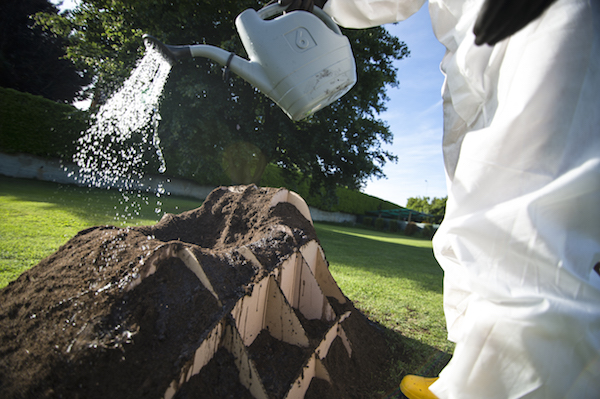
Gift of Jay L. Swanson/Frederick R. Weisman Art Museum, University of Minnesota
Nucleo’s TERRA! ingeniously employs the mass-produced, yet natural, paper product of corrugated cardboard as a physical and conceptual base for its living grass chair. Corrugated cardboard was patented in England in 1856 and further engineered in 1874 to create the strong packing material that emerged in the early twentieth century. The three-dimensional cardboard chair base is flat-packed as its own shipping container, complete with illustrated assembly instructions printed on it, eliminating the need for extra packaging and other ancillary materials. Once “unpacked” and assembled, the form is to be situated in an “ideal [open] area” and filled in with dirt and grass seed. As Nucleo explains, “we provide the cardboard frame and the seeds and the main ingredient, the dirt, can be found everywhere on our planet. The armchair is born in your garden and becomes part of your landscape.”
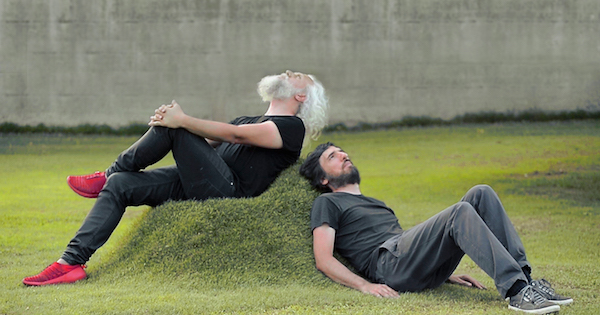
Nucleo, Andrea Sanna + Piergiorgio Robino, LA POLTRONA D’ERBA (The Grass Armchair), corrugated cardboard, 2000. Gift of Jay L. Swanson/Frederick R. Weisman Art Museum, University of Minnesota
First introduced in 2000, TERRA! was named the XIX Compasso d’Oro “Product for the Community” in 2001. It was exhibited at the Centre Pompidou, Paris, in 2002, and at the Triennale di Milano in 2004. When the final stock of TERRA! was sold in 2005, Nucleo decided that the in-house production and distribution of TERRA! was unsustainable and ended it. After receiving a letter from an ardent fan requesting the chair after it was marked as sold out, the designers were persuaded to devise an updated course of production and marketing and announced TERRA! v2.0 in 2016. From its inception at the turn of the millennium to its re-design and recommitment in 2016—a time period of a cohering global consensus on climate change—TERRA! beautifully demonstrates the complexity of, and design’s vital role in, creating a sustainable world.
TERRA! v2.0 Assembly from Nucleo.
Diane A. Mullin
Senior Curator
Weisman Art Museum,
University of Minnesota, Minneapolis


